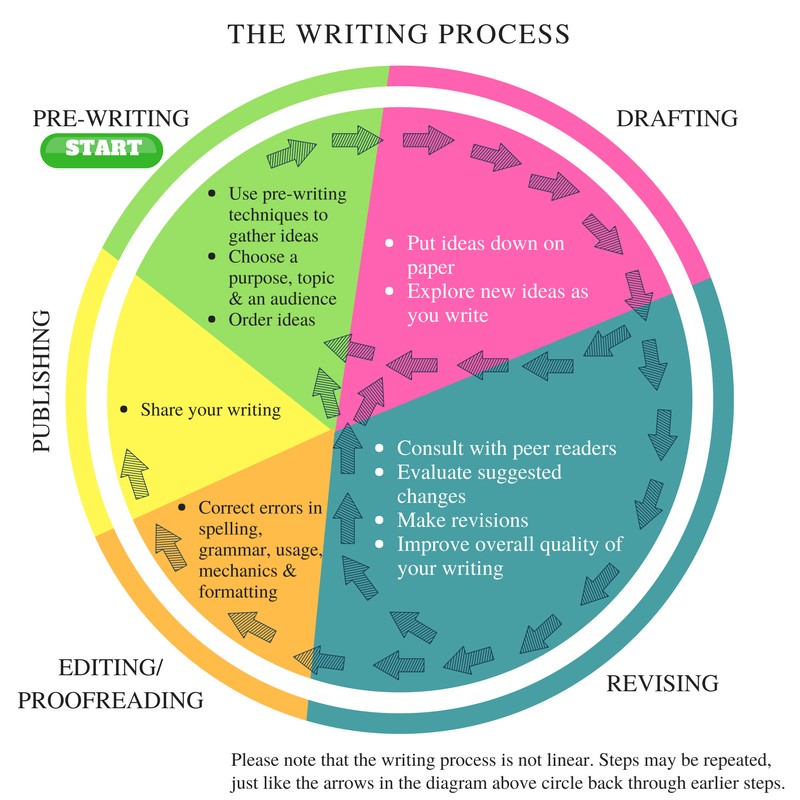The Writing Process
Communication skills, including writing, are some of the most important soft skills (employable skills that have more to do with emotional IQ, such as common sense, communication, problem-solving, and collaboration) that students learn when they are in college because most professions require high competency in written communication. With emails, memos, letters, texts, and even Tweets, most people spend a fair amount of time at work communicating via the written word. Whether you are messaging a colleague, writing to your manager, creating the company newsletter, or writing a press release to the media, your writing skills can boost or hinder your career, even if you do not have a “writing” profession. Basically, writing skills make a difference in how you are perceived in college and in the workplace. That is the reason it is important to follow expected guidelines, always using the steps of the writing process, and make sure that all your writing is coherent, concise, credible, and correct.
What is the writing process?
No matter what type of writing you are doing, academic writing, professional writing, or personal writing, it can be made easier by using the writing process. The writing process consists of the different stages that a writer follows to produce a good piece of writing. Although different sources may label and group the stages in various ways, the stages of the writing process are essentially as follows:
Prewriting (Ch. 4): Deciding what to write about (the topic) and gathering information to support or explain what you want to say about your subject; planning how to organize your ideas in a way that effectively develops the topic.
Structuring (sometimes part of Prewriting or Drafting) (Ch. 5): This stage identifies the main ideas you are going to develop. You should craft a working thesis statement and develop a detailed outline of the essay.
Drafting (Ch. 6): Writing the first copy of the piece (essay, article, etc.). This is often called the rough or first draft. Ultimately, you should have multiple copies or drafts of your work.
Revising (Ch. 7): Reconsidering the ideas and content of the essay as well as refining the style and structure of the paper.
Editing/Proofreading (Ch. 8): Correcting grammar, punctuation, spelling, and mechanics.
Publishing: Sharing the final draft with others.
The Writing Process

The most important lesson to understand about the writing process is that it is recursive; it means that you need to move back and forth between some or all of the steps, and there are many ways to approach this process. Allowing yourself enough time to begin the assignment before it is due will give you time to move from one step to the other, and back as needed. The important thing is to keep writing and improving until a final product is achieved. The more you write, the better writer you will become.
Attributions
The Writing Process – Critical Reading, Critical Writing (howardcc.edu) by Kathy Boylan is licensed under CC BY NC SA 4.0
Image Credit
Writing process image was included in the work from The Writing Process – Critical Reading, Critical Writing (howardcc.edu) by Kathy Boylan is licensed under CC BY NC SA 4.0
